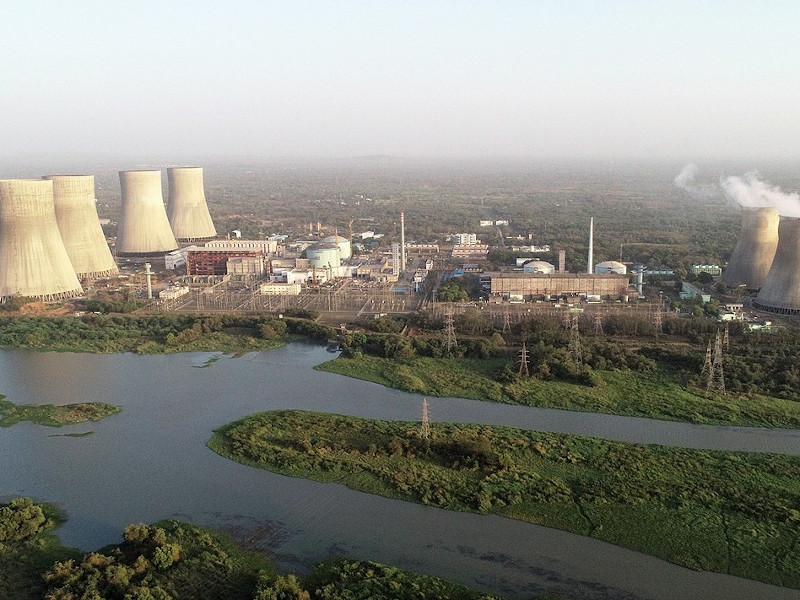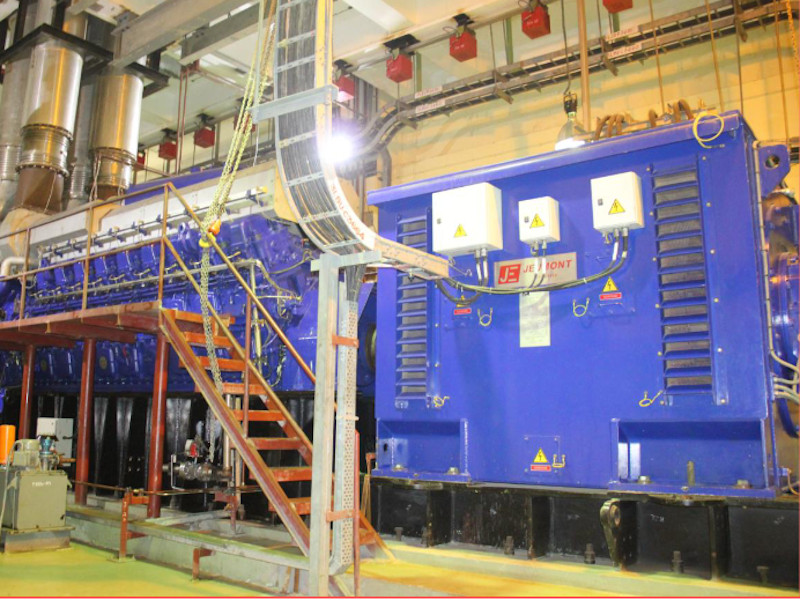The Kakrapar atomic power station in Gujarat, India is being expanded with two new nuclear reactor units of 700MW capacity each.
Owned and operated by state-owned Nuclear Power Corporation of India Limited (NPCIL), the Kakrapar nuclear power station currently has two 220MW operating units that were commissioned in May 1993 and September 1995 respectively.
The two new units (3&4) will feature the first indigenous pressurised heavy water reactor designed by Bhabha Atomic Research Centre. The third reactor unit at the site attained criticality in July 2020 with its commissioning expected by December 2020 while the fourth unit is expected to be commissioned in December 2021.
The total investment on the expansion project is estimated to be £1.2bn ($1.5bn).
Project Gallery
-

Construction works for Unit-3 started in November 2010 followed by Unit-4 in March 2011. Image courtesy of Reetesh Chaurasia.
-

The Kakrapar atomic power station is located in the Vyara District of Gujarat, India. Image courtesy of Department of Atomic Energy.
-

A total of eight diesel generators will supply back up power for the two new units. Image courtesy of NPCIL.
Project location and development
The Kakrapar atomic power station is located approximately 85km east of the city of Surat in the Vyara District of Gujarat, India. The two new units are currently under construction on a 65ha-site on the Southern bank of the Moticher pond adjacent to the existing units of the power station.
The Indian Ministry of Environment and Forest issued the environmental clearance for units three and four in 2006. The first concrete for unit three was poured in November 2010 followed by that for unit four in March 2011. The two 166m-tall natural draught cooling tower shells for the new units were completed in September 2017.
The inner dome concreting for unit four completed by September 2018 while the main and auxiliary airlock testing for the unit three reactor building was completed by March 2019.
Kakrapar atomic power plant units 3 and 4 details
The Indian pressurised heavy water reactor (IPHWR) design being used for the new units at the Kakrapar NPP IS a third-generation pressure tube type reactor that uses heavy water as moderator and coolant. The pressure tube features multiple thin-walled pressure tubes instead of the traditional large pressure vessels used in conventional PHWR reactors.
The reactors will use natural uranium dioxide as fuel. The fuel bundle consists of 37 cylindrical 495.3mm long rod clusters arranged in concentric rings. The fuel assembly consists of 392 horizontal fuel channels that are enveloped by a primary coolant system, a moderator, and a calandria vault water system.
The reactor building design features a primary pre-stressed cement concrete (PCC) barrier and a secondary reinforced cement concrete (RCC) barrier. A passive decay heat removal system (PDHRS) ensures core cooling during power failures and a dedicated emergency core cooling system (ECCS) will enable core temperature control in case of unprecedented accidents.
A total of eight units of 6.6kV diesel generator sets each with a capacity of 4.2MW will supply emergency power for units three and four in case of power failure.
Contractors involved with the Kakrapar nuclear power plant expansion
Larsen & Toubro (L&T) was awarded the construction contract for the main plant civil works for reactors three and four in December 2009.
IVRCL Infrastructures & Projects, an Indian infrastructure company was awarded the engineering, procurement, and construction (EPC) contract for the plant water system package for units three and four.
The contract for the supply of steam turbine generators was awarded to the BHEL-Alstom consortium in April 2011.
Kirloskar Oil Engines was contracted to provide the diesel generator power backup units for the expansion project.
Kakrapar atomic power plant operational history
The two existing units at the Kakrapar atomic power station feature pressurised heavy water reactors (PHWR) of 220MW capacity each.
As of May 2020, unit one generated 30,683 million units of electricity while unit two produced 32,442 million units.
The first unit was put under renovation and maintenance for the En-Masse Coolant Channel Replacement, En Masse Feeder Replacement, and other safety upgrades in 2019. The unit was restarted in May 2019.
Renovation and maintenance work on unit two was also successfully completed in September 2018.
